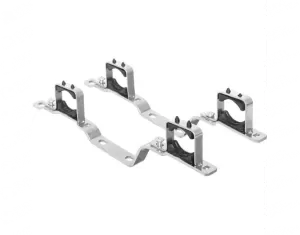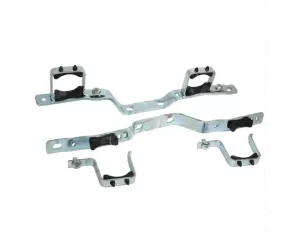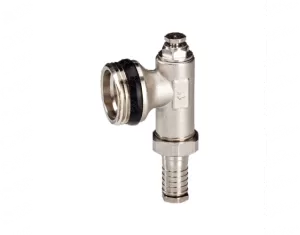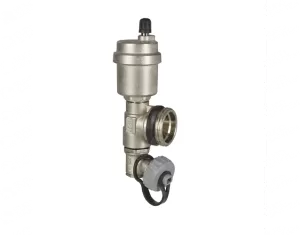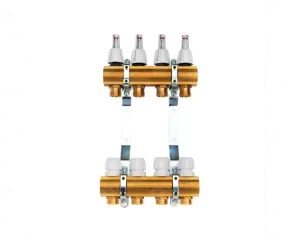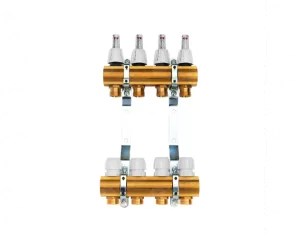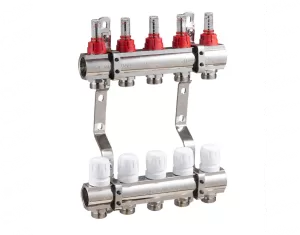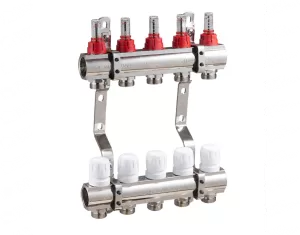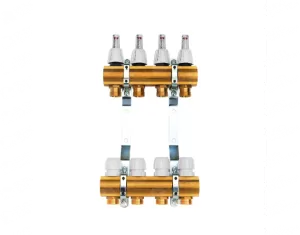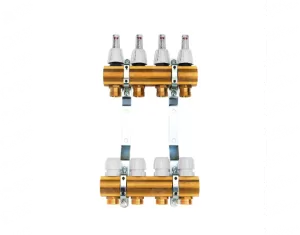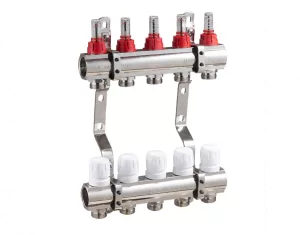Floor heating manifolds, manifolds
Introduction: Unleashing the Potential of Floor Heating Manifolds
Floor heating has revolutionized the way we experience warmth in our homes, and at the heart of this revolutionary technology lies the floor heating manifold. These manifolds play a crucial role in the efficient distribution of heat throughout a space, ensuring that each room is comfortably warmed. Let's delve into the world of floor heating manifolds, exploring their features, benefits, and how they contribute to creating a cozy and energy-efficient living environment.
1. Understanding Floor Heating Manifolds: The Core of Radiant Heating Systems
Floor heating manifolds, also known simply as manifolds, are central components in radiant heating systems. Their primary function is to evenly distribute the heated water or fluid throughout the network of pipes embedded in the floor. This even distribution ensures that every part of the space receives an optimal amount of warmth, eliminating cold spots and providing a consistent and comfortable temperature.
2. Types of Floor Heating Manifolds: Tailoring to Specific Needs
There are various types of floor heating manifolds available, each designed to cater to specific requirements. Common types include two-port and four-port manifolds, with the latter offering greater control over individual heating zones. Additionally, stainless steel and brass are popular choices for manifold construction due to their durability and resistance to corrosion.
3. Materials Matter: Stainless Steel for Durability
Stainless steel floor heating manifolds are renowned for their durability and corrosion resistance. These manifolds can withstand the demands of continuous heating and cooling cycles, ensuring a long and trouble-free lifespan. Stainless steel also maintains its structural integrity even when exposed to water, making it an ideal choice for floor heating systems.
4. Brass Manifolds: Combining Strength and Thermal Conductivity
Brass is another material commonly used for floor heating manifolds. Known for its strength and excellent thermal conductivity, brass ensures efficient heat transfer from the water to the floor. This results in a rapid response time, allowing the system to adjust quickly to temperature changes and providing on-demand heating.
5. The Role of Actuators: Precision Control for Each Zone
Actuators integrated into floor heating manifolds offer precise control over individual heating zones. This zoning capability enables homeowners to tailor the temperature of each room according to specific preferences, optimizing comfort and energy efficiency. Smart thermostat integration further enhances control, allowing remote adjustments for convenience.
6. Flow Meters and Balancing Valves: Fine-Tuning Performance
Flow meters and balancing valves are integral components of floor heating manifolds, contributing to the fine-tuning of system performance. Balancing valves help regulate the flow of water through each manifold circuit, ensuring that heat is evenly distributed. Flow meters provide a visual indication of water flow rates, aiding in system diagnostics and maintenance.
7. Installation and Configuration: Professional Expertise
Proper installation and configuration of floor heating manifolds are essential for optimal performance. Professional installers assess the heating requirements of each space, determine the appropriate manifold type, and configure the system to achieve efficient and balanced heating. DIY installations are discouraged, as incorrect setup may lead to reduced efficiency and potential system malfunctions.
8. Compatibility with Various Flooring Types
One of the advantages of floor heating manifolds is their compatibility with various flooring types. Whether you have tile, hardwood, laminate, or even carpet, radiant floor heating can be seamlessly integrated. This versatility makes it a popular choice for both new constructions and renovations.
9. Energy Efficiency: Reducing Environmental Impact
Radiant floor heating, facilitated by well-designed manifolds, is inherently energy-efficient. The even distribution of heat allows for lower water temperatures, reducing energy consumption. This efficiency not only translates to cost savings for homeowners but also contributes to a smaller environmental footprint by minimizing energy demand.
10. Future Trends: Advancements in Floor Heating Technology
As technology continues to advance, floor heating systems and their manifolds are likely to benefit from innovations. Smart home integration, energy monitoring, and enhanced control interfaces are some trends to watch. These advancements aim to make floor heating even more user-friendly, energy-efficient, and seamlessly integrated into modern home automation systems.
Conclusion: Elevating Comfort with Floor Heating Manifolds
In conclusion, floor heating manifolds are pivotal in creating a comfortable, energy-efficient, and evenly heated living space. Their role in distributing warmth effectively, coupled with advancements in materials and technology, positions them as essential components in modern heating systems. As homeowners increasingly seek sustainable and personalized heating solutions, floor heating manifolds play a central role in meeting these demands, providing a warm and cozy environment for years to come.
